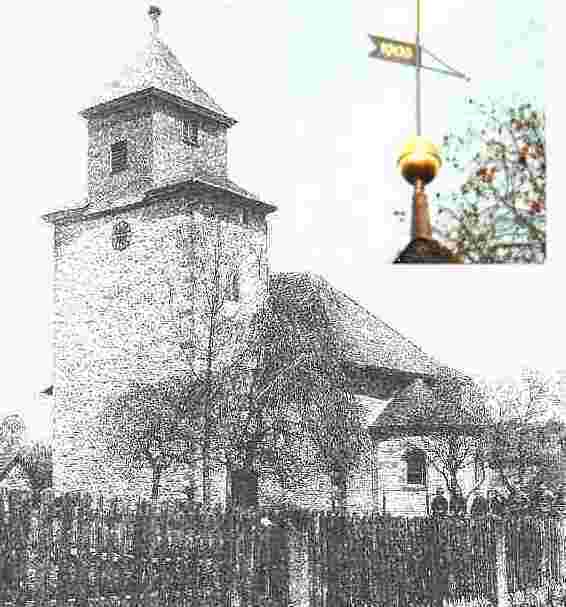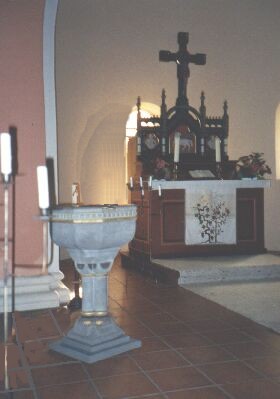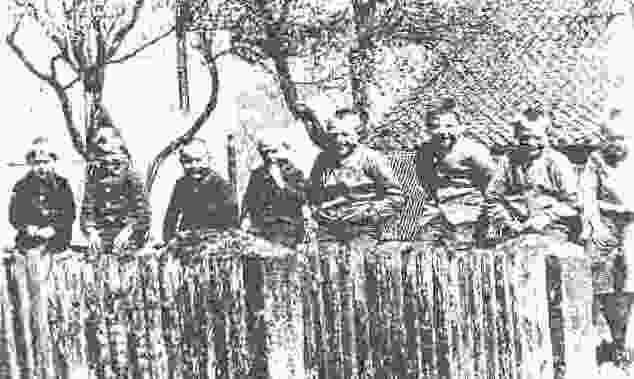|
Esebeck in the History of our Family The little village of Esebeck with its 700 inhabitabts lies on the western slopes of the Leine valley above the village Elliehausen. It was founded as one of the "beek"-places in the 9th and 10th century. The first documented record can be found in the curriculum vitae of Bishop Meinwerk of Paderborn: in 1036 the church in Paderborn receives "Asbiki, que est iuxta Hursti" (Esebeck, that is near Harste) as a gift besides other goods. Farming has dominated the settlement for many centuries. It belonged to the administrative district of Harste, later to the district of Göttingen before it was incorporated into the City of Göttingen in 1973. A sense of civic responsibility and community life shape the village. Esebeck has an active historical society whose positive work may be seen at many spots making the place more beautiful. Half-timbered houses are kept away from destruction and preserved.
The north-south orientation of the church nave is unique. The congregation looks south to the altar. The light falling through the windows of the apse radiates around the altar and the baptismal font. For three quarters
of a century my ancestors Hillebrecht have lived in Esebeck. It started
with 51 year old widower Johann Heinrich Hillebrecht,
who married in second marriage the 35 year old Sophie
Christine Schlieper from Esebeck on 29th September 1822 in the local
church. Their two sons Heinrich Christian Wilhelm Hillebrecht and Friedrich
Wilhelm Hillebrecht were born in Esebeck. My ancestor Friedrich Wilhelm
Hillebrecht was baptized on New Years Day 1826 in the church.
Besides the family Hillebrecht the families Rakebrandt, Schlieper, Schrader and Rust from Esebeck belonged to my ancestors. Johann Heinrich Hillebrecht was a weaver and produced linen. Flax cultivation belonged to linen weaving as did the immersion of the harvested flax in water in order to separate the fibres from the plant through rotting. Flax was put into water for 5 to 8 days to facilitate this process. One street name in Esebeck reminds us of this: Flachsrotten (flax rotting site). Weaving provided a second income to small peasants and farm laborers. Especially in winter linen was produced. It was sold mostly through cooperative linen exchanges. In the 19th century small scale linen production started to decline. During the occupation by Napoleon and the resulting continental embargo important markets in Great Britain and its colonies were lost. After that the mechanization with steam driven looms made a recovery very difficult.
|
 An
early church St. Pancratius was erected in 1356/1357. The nave was rebuilt
in 1755 after the collapse of the old one. The neo-Latin apse was added
on the south side in 1890. The large photo pictures the church before 1903
and the insert shows the weather vane bearing the year 1903. On the original
photo no weather vane is visible.
An
early church St. Pancratius was erected in 1356/1357. The nave was rebuilt
in 1755 after the collapse of the old one. The neo-Latin apse was added
on the south side in 1890. The large photo pictures the church before 1903
and the insert shows the weather vane bearing the year 1903. On the original
photo no weather vane is visible.
 Esebeck
was and still is an affiliate church congregation to Elliehausen. Since
the reformation the church congregation was administered by the pastor
from Elliehausen.
Esebeck
was and still is an affiliate church congregation to Elliehausen. Since
the reformation the church congregation was administered by the pastor
from Elliehausen.
 This
also influenced my ancestors. When Johann Heinrich Hillebrecht died in
1834 he left no wealth behind. His descendants continued to work as weavers
but at the end of the 19th century they moved towards Göttingen-Grone
to find work in the textile mill there. The picture shows boys from Esebeck
of around this time before 1900. It is an enlarged clipping of the church
photo above. Perhaps there is also a Hillebrecht amongst them?
This
also influenced my ancestors. When Johann Heinrich Hillebrecht died in
1834 he left no wealth behind. His descendants continued to work as weavers
but at the end of the 19th century they moved towards Göttingen-Grone
to find work in the textile mill there. The picture shows boys from Esebeck
of around this time before 1900. It is an enlarged clipping of the church
photo above. Perhaps there is also a Hillebrecht amongst them?